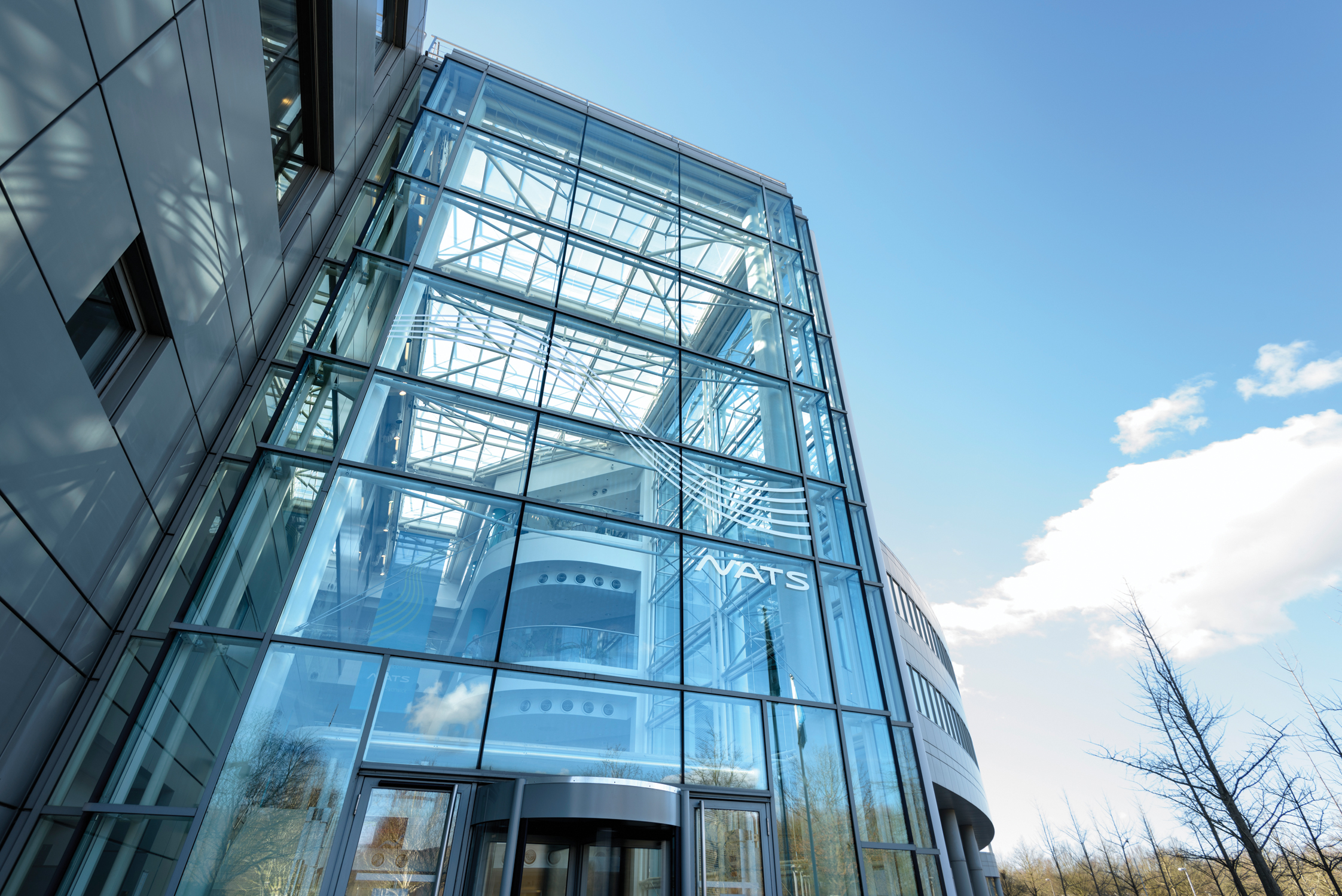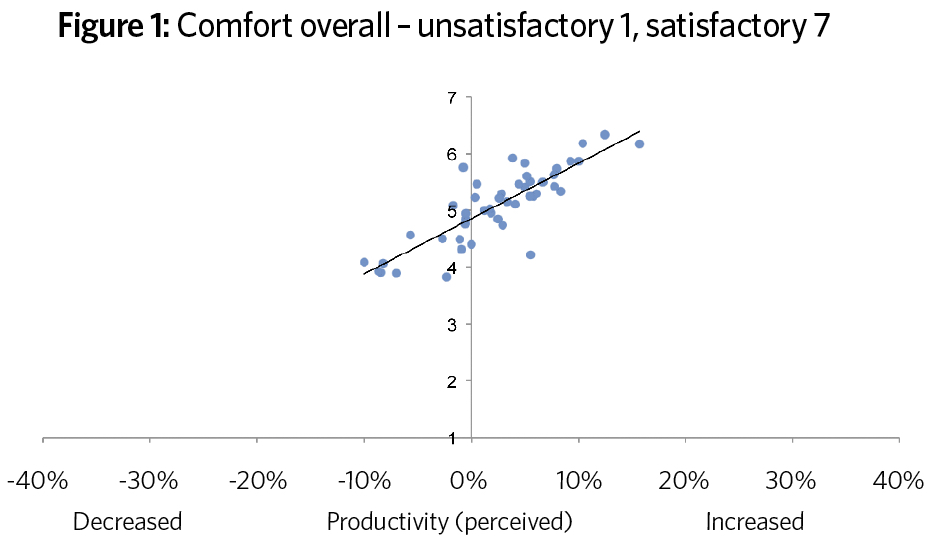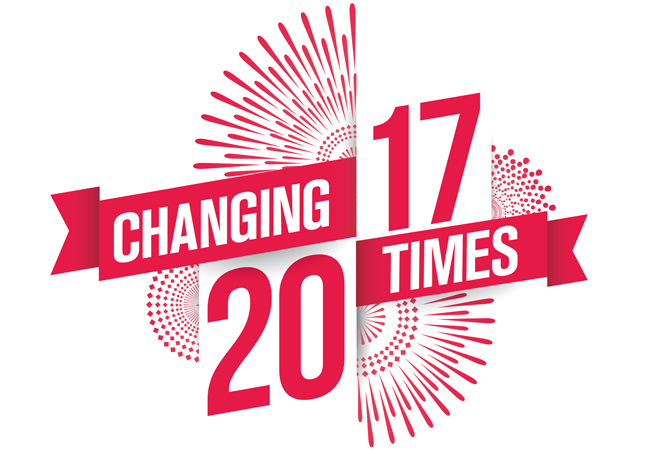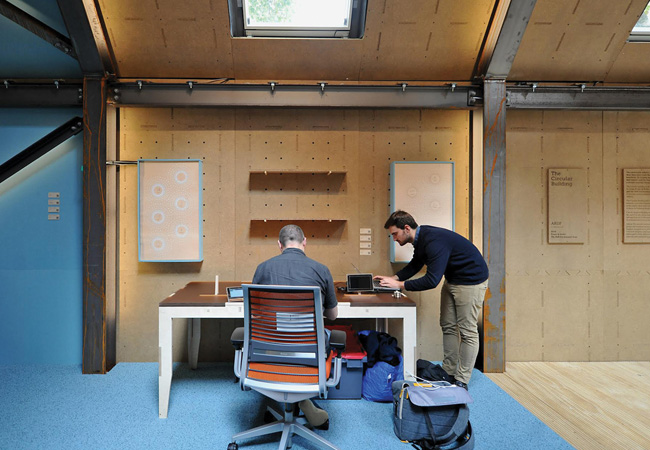
One of the WLP+ trials will take place in an air traffic control building
Most designers, developers and users would agree that a high-performing building should be energy efficient and have optimum indoor environmental conditions for the occupants. However, research highlights a lack of consensus on the optimal conditions for a healthy and productive workplace (see panel ‘Existing research’).
The Whole Life Performance Plus (WLP+) research project is examining how sustainable buildings can also enhance productivity and wellbeing. Organisations involved in the study include NATS, the UK air traffic navigation services company, which handled 2.3 million flights in 2015.
A consortium of partners led by LCMB, in collaboration with the Low Carbon Building Group of Oxford Brookes University, obtained funding for the WLP+ project. Its objectives are to better understand the relationship between indoor environmental quality (IEQ) and people’s productivity. It aims to develop a methodology for increasing workplace productivity by 10%, while reducing building-energy use by 30%. The research is supported by Innovate UK’s Building Whole Life Performance (BWLP) programme and the Engineering and Physical Sciences Research Council (EPSRC).

For this project, IEQ encompasses factors such as lighting, temperature, fresh air levels, noise and indoor pollutants, plus other less obvious factors such as the use of biophilia in the workplace.
Changes to IEQ are often reactive, based on feedback such as the thermal discomfort of building users. There is limited real-world research on how environmental changes impact on productivity – and even less is known about how the impact varies depending on factors such as task behaviour, time of day and outside weather conditions. Most office environments operate around fixed set points based on industry guidance. The WLP+ project will create a benchmarking tool and software model that can optimise office environments in real time.
Rajat Gupta heads the Low Carbon Building Group at Oxford Brookes University, and is the academic lead on the project. After a six-month review of existing research, Gupta and his colleague Adorkor Bruce-Konuah identified that existing research had focused on specific activities in controlled conditions that were not representative of the real world. Studies had also used self-reporting of work environments and productivity, rather than independent measurement (See panel ‘Existing research’).
Why NATS matters
The air traffic control company NATS is taking part in the trial and will work with facilities management (FM) company Emcor UK to understand how buildings can be operated to optimise workers’ environments.
‘We have known for some time that people react differently to environmental conditions based on factors such as temperature, ventilation and natural light,’ says Dan Clark, head of central services and assurance for NATS FM. ‘However, there has been no guidance detailing the correlation between variance in these conditions and productivity.’
Steve Dolan, strategic director at Emcor UK, says FM for organisations such as NATS had been asset-focused, concentrating on cost efficiency while optimising service levels. ‘It is a great opportunity to provide a real-world application for the theories and models being developed, as well as an interesting learning curve as to what makes our building users more productive and feel engaged with their place of work,’ he says.
WLP+ involves gathering real-time data from live offices. Property developer Argent, King’s College London and facilities management company Emcor UK have offered buildings for the trials that represent three models: managed by developer; managed by owner-occupiers; and managed by property managers/FM contractors. One trial will take place in air traffic control buildings run by NATS. (See panel, ‘Why NATS matters’).
Indoor environmental quality
IEQ data will be monitored through the building management system (BMS), supported by stand-alone data loggers. Parameters to be measured will include temperature, relative humidity, CO2 concentration, light levels, noise levels and airflow rates. In naturally ventilated case-study buildings, the use of windows will also be monitored. Workers in the case-study buildings will participate in surveys and simulated tasks. The surveys are designed to record perceptions of their working environment and their productivity, while the simulated tasks are designed to assess their performance in the current environmental conditions.
After the baseline measurement period, recorded environmental conditions will be assessed against recommended standards for best practice. Parameters that fall short of the benchmarks present an opportunity for intervention – for example, increasing fresh air supply to reduce CO2 concentration. After the interventions, IEQ will be monitored, and occupant surveys and simulated tasks repeated.
Existing research
Findings from a review of existing research by Rajat Gupta and Adorkor Bruce-Konuah
- Previous studies on the effect of IEQ on workplace productivity have focused on individual parameters of the environment and performance in specified activities – for example, a 21% decrease in cognitive function when indoor CO2 is increased from 550ppm to 945ppm1 –rather than the complex interactions we see in workplaces
- Most of these studies have been conducted in controlled, static conditions, which are often not representative of the real world
- Studies have used self-reported assessments of working environments and productivity to quantify a relationship between IEQ and productivity, rather than independent measurement
- A new meta-analysis, a statistical review of Innovate UK’s previous building performance evaluation project database, showed comfort explained 72% of the perceived productivity variation (Figure 1).

Productivity in the intervention period will be compared with that in the baseline period, to assess the interventions’ effectiveness. The outcomes will be used to develop tools to improve and manage workplace productivity, including measures to benchmark existing buildings, and dynamic algorithms to control indoor environments in real time. The two-year project is due to be completed in 2018.
‘The outcome from WLP+ will help define how organisations can configure their buildings to make their most important and expensive assets – their people – perform at their best,’ says John O’Brien, founder and managing director at LCMB. Producing the evidence that office environments can increase people productivity has the potential to create a compelling case for investment, and to improve the operation of services in existing buildings and new developments. Visit www.wlpplus.com for more details.
- Tom Cudmore is a senior consultant at building performance specialists LCMB
References:
- Allen, J G; MacNaughton, P; Satish, U; Santanam, S; Vallarino, J & Spengler, J D (2015). ‘Associations of Cognitive Function Scores with Carbon Dioxide, Ventilation, and Volatile Organic Compound Exposures in Office Workers: A Controlled Exposure Study of Green and Conventional Office Environments.’ Environmental Health Perspectives, Online 26 (October).



